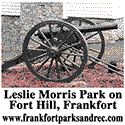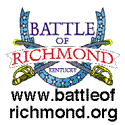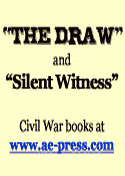|
Civil War enabled photography
to quickly reach maturity
Photography was only 21 years old when the Civil War started.
And, four years later, the conflict became the most visually recorded event in history. In the process, photography made leaps and bounds as an important craft.
The process of recording a moment in time began in 1839 with the daguerreotype, in which pictures were produced on chemically treated plates of metal or glass.
Individual portraits of soldiers were the most common use of the craft in 1861. Images were placed on metal or glass and placed in small glass-covered, fold-open wooden cases. The glass images were known as ambrotypes while the metal versions were identified as tintypes or ferrotypes. Millions of cased images probably were made during the war.
Carte de visite (CDV) also was primarily a portrait photo, but was reproduced with a glass, wet-plate negative, which provided for unlimited photo copies on albumen paper. Usually, photographers used a four-lens camera to produce four CDV negatives on a 7x9-inch glass plate. Each negative produced a print about the size of a trading card.
Most army officers, statesmen, entertainers and celebrities favored the CDV system.
Photos taken in the field by such personalities as Mathew Brady, Alexander Gardner, George S. Cook and the E.&H.T. Anthony Company were taken on glass plate negatives and, again, prints were made on albumen photographic paper. It’s estimated that more than 5,000 battlefield, camp and outdoor photos were created by this method for military and commercial use.
Brady employed Gardner and some 20 other men to go out and photograph scenes from the Civil War. Each was given a traveling darkroom.
Many such photos were 3-D stereographs taken with a twin-lens stereoscopic camera. Original Civil War battlefield photos usually are 3x6-inch stereo views.
Cameras were much larger during the war and picture-taking was a slow and complex process. Photographers often would follow armies into battle to obtain images of battle scenes, traveling by horse and wagon to different locations.
Frenchman Joseph N. Niepce took the first photograph using a camera in 1826. He called his pictures Heliographs, which were exposed on 8x6.5-inch pewter plates sensitized by bitumen. Exposure sometimes would take up to eight hours.
Niepce formed a partnership with painter Louis Daguerre to perfect the new art, but Niepce died in 1833 and left Daguerre to continue. Daguerre perfected the process by sensitizing the silver plates with the fumes of iodine.
Brady, known as the father of photojournalism, is believed to have taken more photographs of important historical personalities than anyone else during the 19th century. He was the first to take photo documentation of the Civil War and, at Manassas, he nearly was killed. Lost for three days, he eventually made it to Washington, D.C., nearly dead from starvation.
|










